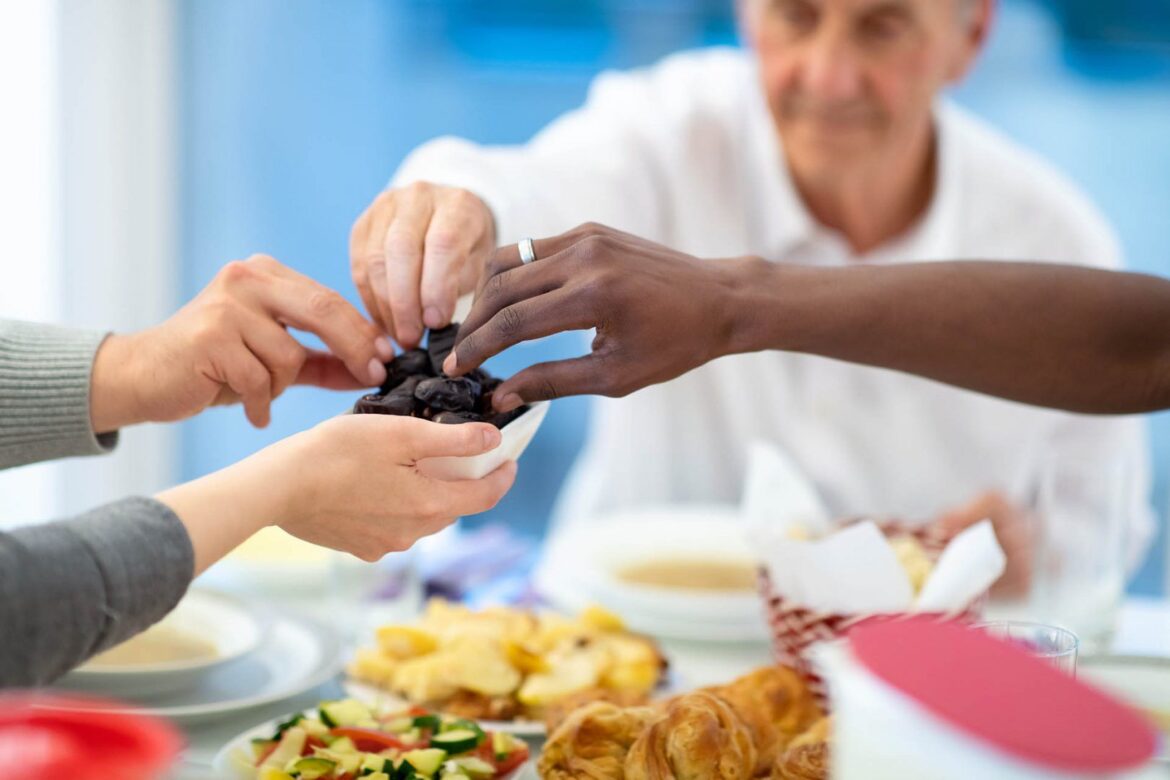Morocco has a rich and diverse eating culture that reflects its history, geography, and influences from Arab, Berber, and Mediterranean cuisines. Moroccan cuisine is known for its vibrant flavors, aromatic spices, and unique combinations of ingredients. Here are some key aspects of the eating culture in Morocco:
- Meals: Moroccans typically have three main meals each day. Breakfast is usually light and consists of bread, pancakes (baghrir or msemen), honey, jam, and tea. Lunch is the main meal of the day and is often enjoyed with family or friends. Dinner is lighter and may include a variety of dishes.
- Bread: Bread, particularly round loaves of khobz, is a staple in Moroccan cuisine. It is served with almost every meal and used to scoop up food or wrap ingredients.
- Tagine: Tagine is both a popular Moroccan dish and the name of the clay cooking pot used to prepare it. Tagine dishes are slow-cooked stews that typically combine meat (such as lamb or chicken), vegetables, and a blend of spices. They are often flavored with ingredients like saffron, ginger, cumin, and cinnamon.
- Couscous: Couscous is a staple grain in Morocco and is often served on Fridays, the Islamic holy day. It is steamed and fluffy, and typically accompanied by vegetables, meat (such as lamb or chicken), and a flavorful sauce.
- Mint Tea: Mint tea, known as “atai,” is an integral part of Moroccan hospitality. It is served throughout the day and after meals. The tea is made with green tea leaves, fresh mint leaves, and sugar, and it is poured from a height to create a frothy texture.
- Street Food: Morocco is famous for its vibrant street food scene. You’ll find stalls and vendors selling a variety of snacks like grilled meats, kebabs, fried fish, snail soup (babbouche), savory pastries (such as msemen or briouats), and sweet treats like Moroccan pancakes (baghrir) and honey-drenched pastries (like sfenj).
- Ramadan: During the holy month of Ramadan, when Muslims fast from sunrise to sunset, the eating culture in Morocco changes. The fast is traditionally broken with dates and a glass of milk or water. After sunset, families gather for Iftar, the evening meal, where a variety of dishes are served.
- Harira: Harira is a hearty Moroccan soup that is commonly consumed during Ramadan to break the fast. It is made with tomatoes, lentils, chickpeas, and various herbs and spices. Harira is often served with dates and traditional Moroccan pastries.
Morocco’s eating culture is a blend of traditional practices, regional variations, and influences from neighboring countries. It embraces communal dining, generous hospitality, and the use of aromatic spices to create flavorful and memorable dishes.
